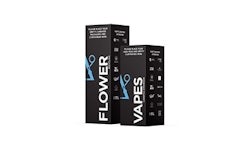As the cannabis industry continues to evolve and mature, so too are consumers. Some, especially in established West Coast markets, are getting more sophisticated, while Midwest cannabis companies are learning what products are resonating in their areas and starting to fill education gaps with detailed packaging, online resources and in-person conversations.
Cannabis consumers are a varied group. As William “Beau” Wrigley Jr. notes in The Last Word interview, a key challenge for cannabis companies is, “… How do you reach your consumers? And in our case,” he says, “we have multi-generational consumers who are 21 to 80 [years old], and it’s all about really unlocking the code to how do you do that.”
Throughout this issue, CEOs and contributors offer many strategies for unlocking that code and reaching wide and niche audiences alike.
For example, Melinda Rombouts, founder and CEO of Ontario-based cannabis cultivator Eve & Co., featured in the cover story, discovered through internal market research a key demographic other Canadian cannabis companies were missing: women. The data showed more women were buying cannabis products than was previously thought. Despite advisers’ concerns, Rombouts realigned her company to better serve women, complete with branding and marketing that would speak to them. A million square feet later, she knows her gambit paid off.
Brightfield Group addresses another missed opportunity—occasion-based marketing—in this month’s Sales Trends. Especially for newer consumers, it’s important to suggest when products might best complement various activities, going beyond just feelings or sleep. Brightfield’s Madeline Obrzut explains that consumers are increasingly pairing video games with cannabis, and very few products are marketed to this varied and engaged demographic that includes a growing number of young women and parents. Products that are tailored to potential activities for which cannabis may be best—for example video games, biking, yoga, parties—could engage the unfamiliar but curious.
While niche strategies can be effective, opportunities to improve education for all, even connoisseurs, is also important, note Robert C. Clarke and Mojave Richmond in their column. Although cannabis companies are increasingly listing primary terpenes on packaging and going beyond the indica/sativa binary, myrcene, linalool and limonene don’t really mean anything to most consumers. Instead, Clarke and Richmond propose easy-to-understand Cannabis Flavor & Fragrance Groups to give consumers a preview of what aromas and tastes different cultivars offer, similar to how beer and wine are marketed.
The main lesson: Investigating niche audiences and discovering what resonates most with consumers can help set your cannabis company apart.

























